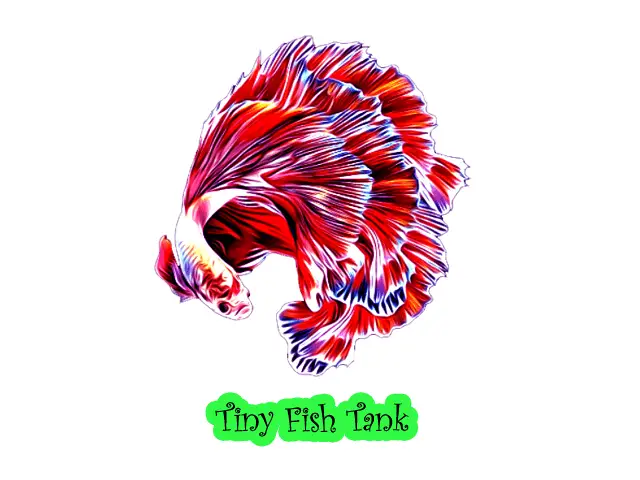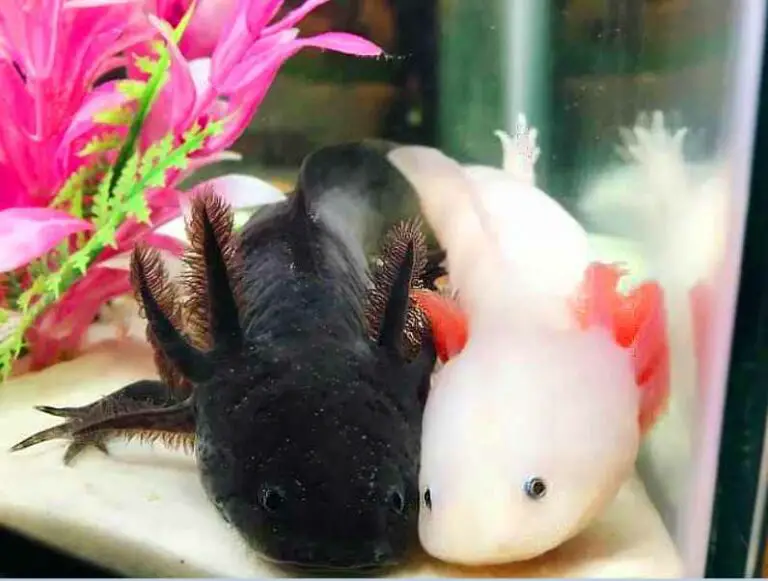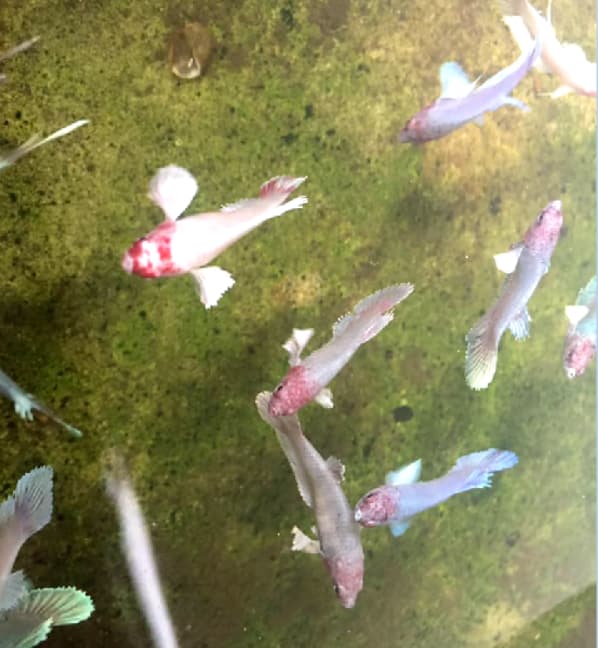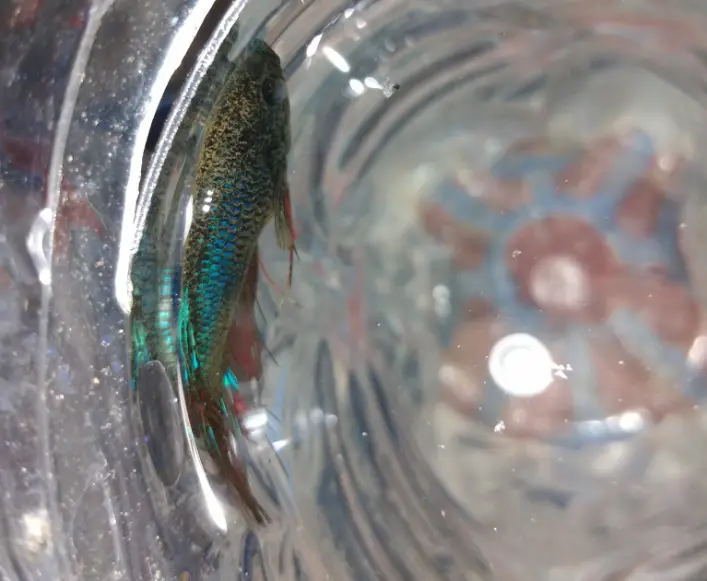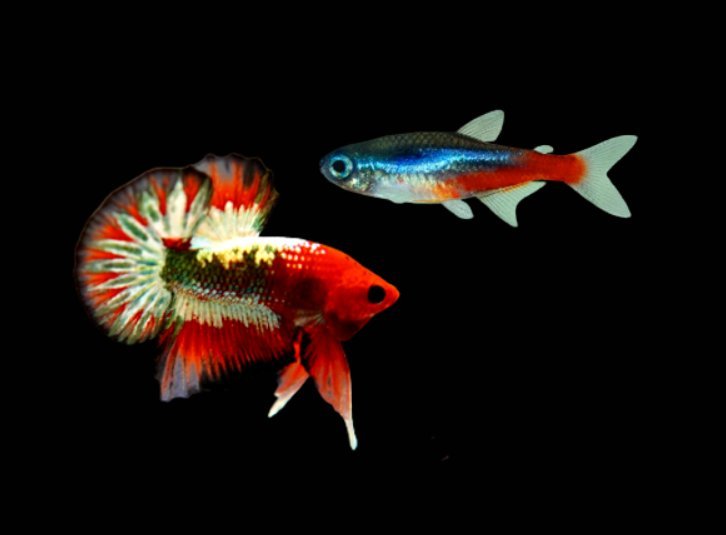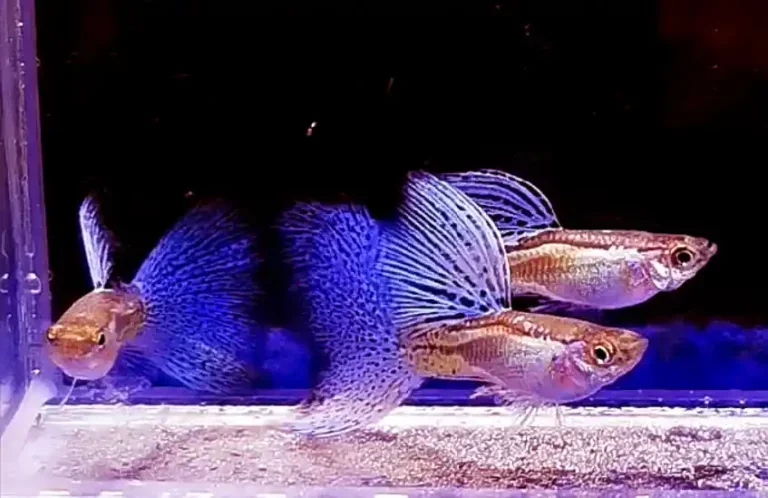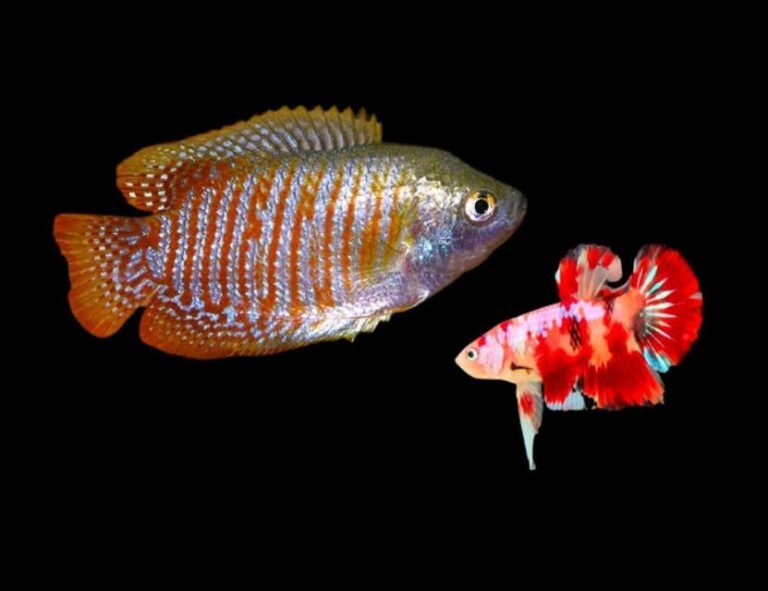Can We Keep Amano Shrimp With Betta?
Keeping Amano Shrimp with Betta is challenging. You must think twice once you bring another aquatic creature and introduce a tank mate to your Betta fish (Siamese fighting fish). Knowing the aggressive temperament of your Betta can bring many issues and injuries and can even be fatal to the tank mate. You should be well informed about the possible Betta tank mates and lower the chances of conflict to <10% before introducing a mate to the 10-gallon tank.
Ichthyologists have different opinions about keeping Amano shrimp (Caridina Multidentata) with Betta fish and their coexistence in home aquariums. Amano Shrimp, introduced to the aquarium trade in 1976 by Takashi Amano, takes second place by popularity among shrimps kept as aquarium pets. We will provide you with facts about both Bettas and Amano shrimps, including ideal water conditions and behaviors, and in the end, let you decide whether to house these two kinds together based on a balanced risk assessment.
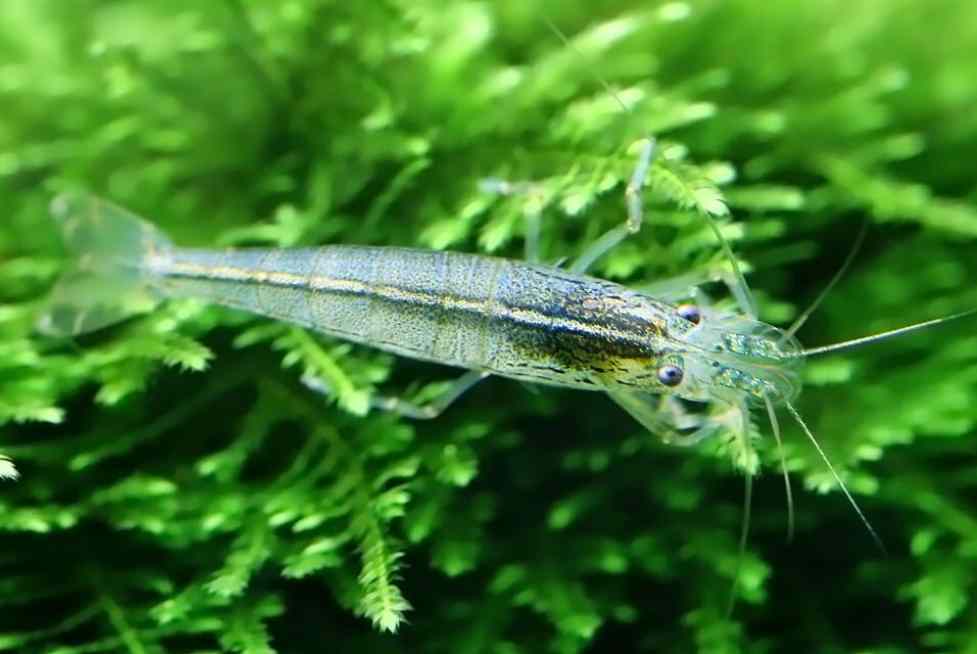
Proper precautions like adding hiding spaces and keeping water parameters stable can optimize the chances of a healthy coexistence between 1 Betta and 5 Amano shrimp in a planted 10-gallon tank. Continuously monitoring their interactions, especially during feeding time, and having a backup plan is advised. While no combination is guaranteed, the proper setup and preparation can lead to successful shrimp-keeping with Bettas.
Table of Contents
- Amano Shrimp Lifespan & Size
- Water Conditions And Temperature For Amano Shrimp And Bettas
- Do Amano Shrimps Get Along With Bettas?
- Can Amano Shrimp Eat Betta Food?
- How to Choose an Amano Shrimp for a Betta Fish Tank?
- How Many Amano Shrimp in a Betta Tank?
- Conclusion
Amano Shrimp Lifespan & Size
Amano Shrimp Lifespan and size depend on various factors. Water quality, temperature, food, and tank size are critical factors in expanding Amano Shrimp’s Lifespan and growth size.
- Lifespan: 2-3 years is average in home aquarium conditions if kept healthy.
- Maximum Size: Amano shrimp can grow up to 2 inches (5 cm) long when fully mature after 6-12 months.
- Males stay smaller, reaching 1.5 inches (4 cm) maximum. Females grow larger up to 2 inches.
- When first introduced, shrimp suffer higher mortality rates from shipping/handling stress and acclimating to new water parameters.
- Once adapted to the tank after a few weeks, Amano shrimp are pretty hardy if provided with good water quality and food. Proper care can extend lifespan closer to 3 years.
- Molting (shedding their shell) makes shrimp vulnerable until their new shell hardens. Good calcium levels and iodine help ensure successful molting.
- Given proper tank conditions and hiding spaces, Amano shrimp can thrive alongside betta fish for 1-2 years, contributing to activity and tank cleaning.
Water Conditions And Temperature For Amano Shrimp And Bettas
Water condition is the central part when housing Amano Shrimp and Bettas. When keeping multiple aquatic species together in an aquarium, their water parameter needs must be compatible or close to an ideal match for both to survive and thrive. This applies to water conditions like temperature, pH, hardness, behavioral traits, and tank preparation.
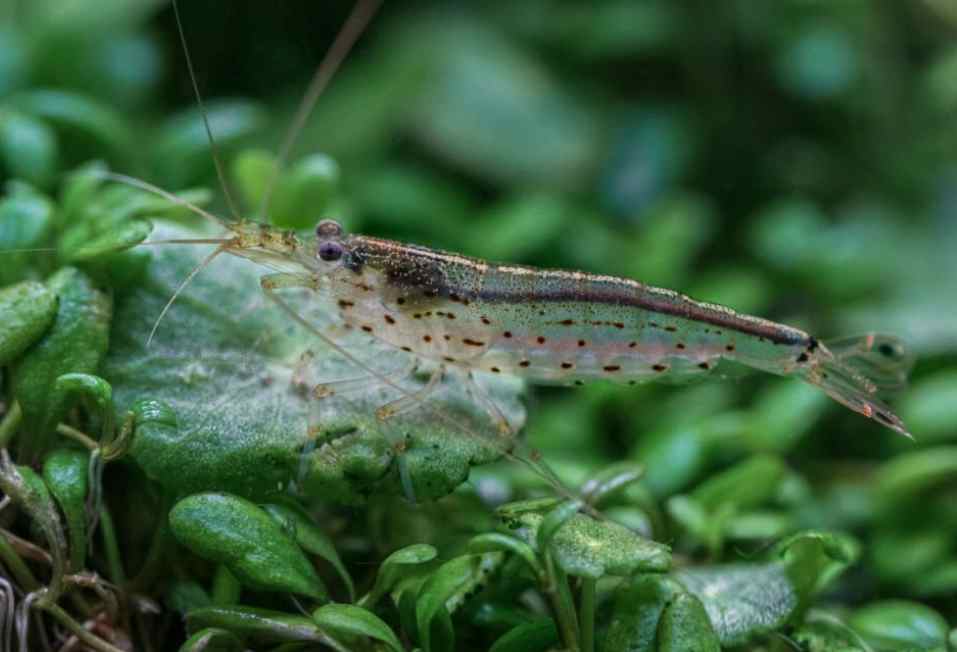
Amano shrimp, scientific name Caridina multidentata, prefer water temperatures between 72-78°F (22.22 °C – 25.56 °C), precisely matching the ideal range for Betta of 76-82°F (24.44 °C – 27.78 °C). Both species do best in warm water environments, so no adaptation is needed.
Keep Ammonia and nitrite levels at 0 ppm for shrimp and fish for healthy water quality. Nitrate levels can be slightly higher for shrimp, up to 30 ppm, while Bettas tolerate 10-20 ppm. Maintaining nitrates under 20 ppm satisfies both.
Betta fish prefer a pH between 6.5-7.5, and Amano shrimp have a wider acceptable range of 6.5-8.0. A pH of 7.0 would be ideal for cohabitation.
Amano shrimp thrive in water hardness of 4-10 dKH, while Bettas favor soft water under 25 dKH. Finding a midpoint around 5-10 dKH can satisfy both species’ requirements.
Providing ample live plants and hiding spots like driftwood, stones, and caves allows shy Amano shrimp to feel secure sharing a tank with predator fish like Bettas. Avoid small pebble substrates, as shrimp can get trapped.
With careful consideration of compatible conditions and tank preparation, Amano shrimp and Bettas can coexist in a thriving, healthy aquarium environment. Frequent testing and partial water changes will be critical to maintain ideal parameters.
Do Amano Shrimps Get Along With Bettas?
Amano shrimp are known for their peaceful, docile temperament within community aquariums. Unlike some more aggressive shrimp species, Amano shrimp do not bother tankmates and simply focus on grazing constantly for food particles. They are highly active scavengers, especially in groups of 5-6 shrimp.
Typically, Amano shrimp will occupy the tank’s lower levels and planted areas, climbing on leaves, stones and decorating to eat algae. Betta fish primarily reside near the top—this natural difference in zone preference limits confrontation. On rare occasions, Amano shrimp may boldly swim in open water.
The only intraspecies aggression seen in Amano colonies involves food dominance. The largest female shrimp will first get food access, only allowing others to approach once satiated. Females grow up to 2 inches long while males reach 1.5 inches maximum.
Amano shrimp are adept hiders, often disappearing into thick plants, stones, or decor crevices for hours. Lack of visibility does not indicate disappearance – they are likely hiding within the tank.
Given their peaceful nature and zone difference from Bettas, Amano shrimp can make excellent Betta fish tankmates provided ample territory and hiding spots. Their activity helps clean algae from surfaces Bettas often ignore. Shrimp and Betta can form a thriving community with proper ratios and precautions.
Can Amano Shrimp Eat Betta Food?
Yes. As natural scavengers, Amano shrimp will readily consume any fish food that sinks to the bottom of the tank, including Betta pellets or flakes. Their restless foraging makes them excellent tank cleaners.
Amano shrimp are opportunistic omnivores that will eat nearly any meaty or plant-based foods. They particularly relish nutritious algae growth in the tank. Though only growing to about 2 inches maximum, Amanos are efficient grazers, needing just 5-6 shrimp for a 10-gallon tank.
While shrimp pellets tailored for Amano shrimp provide an ideal balanced diet, in a pinch, they can thrive off of betta food, especially high-protein pellets or flakes. Blanched vegetables like “spinach, cucumber, kale, and squash” also make healthy supplemental feedings 1-2 times per week.
With their resilient scavenging abilities and adaptable appetites, Amano shrimp are unlikely to starve in community tanks, even if betta food becomes their primary diet. Their natural drive is to constantly forage for bits of anything edible on surfaces and the bottom substrate.
As long as the Betta allows it, Amano shrimp can thrive off protein-rich betta pellet food that sinks for them to find. Their dietary flexibility and persistence mean they can survive on leftovers and tank algae alone if needed.
How to Choose an Amano Shrimp for a Betta Fish Tank?
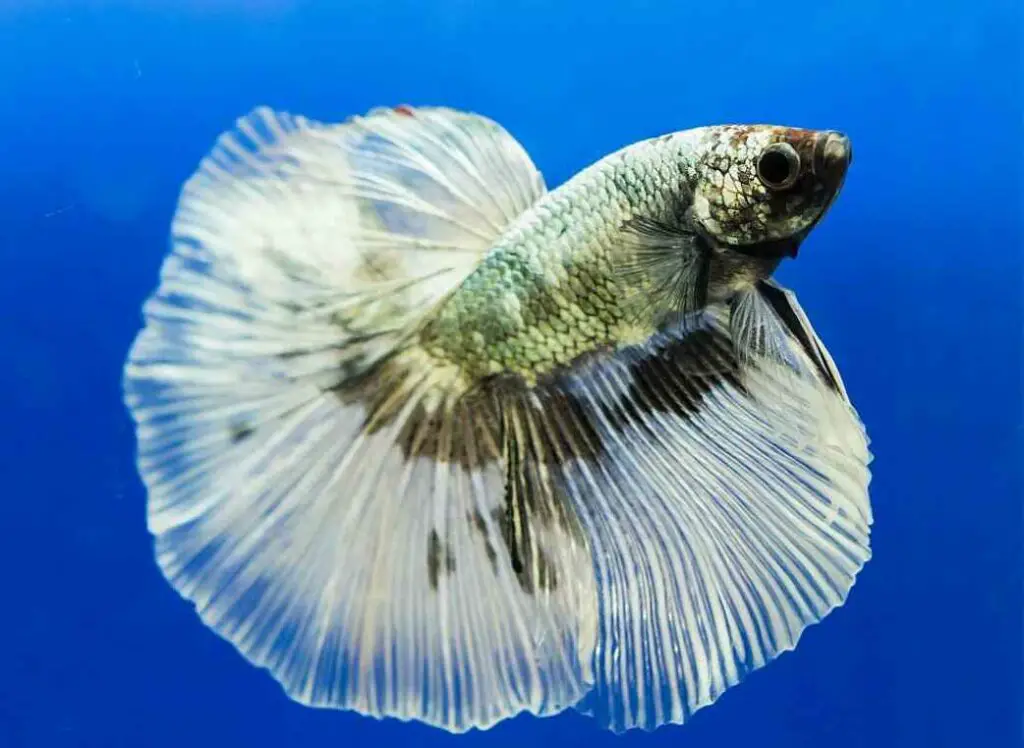
When adding Amano shrimp to a Betta aquarium, start by sourcing shrimp from a reputable breeder or aquarium store with clean, healthy tanks. Avoid stores with dead fish or excessive waste in shrimp tanks.
Look for shrimp displaying natural, active behaviors like grazing and swimming. Check that both antennae pairs are intact and extend from below the eyes. The translucent carapace (shell) should have legs attached underneath and an abdomen divided into flexible segments.
Make sure the tail is clear and thin, consisting of flat plates stemming from the posterior shell section. The eyes should be clear and prominent on the head. Missing parts like antennae or cloudy eyes signal poor health.
While color varies from grayish-green to reddish-brown, the body should have numerous small dots and dashes distributed throughout. Solid-body color or unusual patches may indicate stress or disease.
Purchase shrimp that are at least 1 inch in size for hardiness, but expect rapid growth up to 2 inches in a thriving tank. Avoid any shrimp smaller than 0.75 inches, as they are likely juveniles and vulnerable.
Selecting active, properly developed Amano shrimp from a trusted source gives you the highest chance of successfully adding shrimp to a Betta community tank. It’s better to quarantine new shrimp before introducing tankmates.
How Many Amano Shrimp in a Betta Tank?
For a 5-gallon Betta tank, start with just 3-5 Amano shrimp to reduce chances of confrontation or bullying. Generally, 1 shrimp per 2 gallons of water is a safe ratio.
In larger setups like a 10-gallon, aim for 5-6 shrimp to form a proper scavenging colony that can keep tank surfaces clean. Never keep just one solo shrimp, as they are vulnerable when molting.
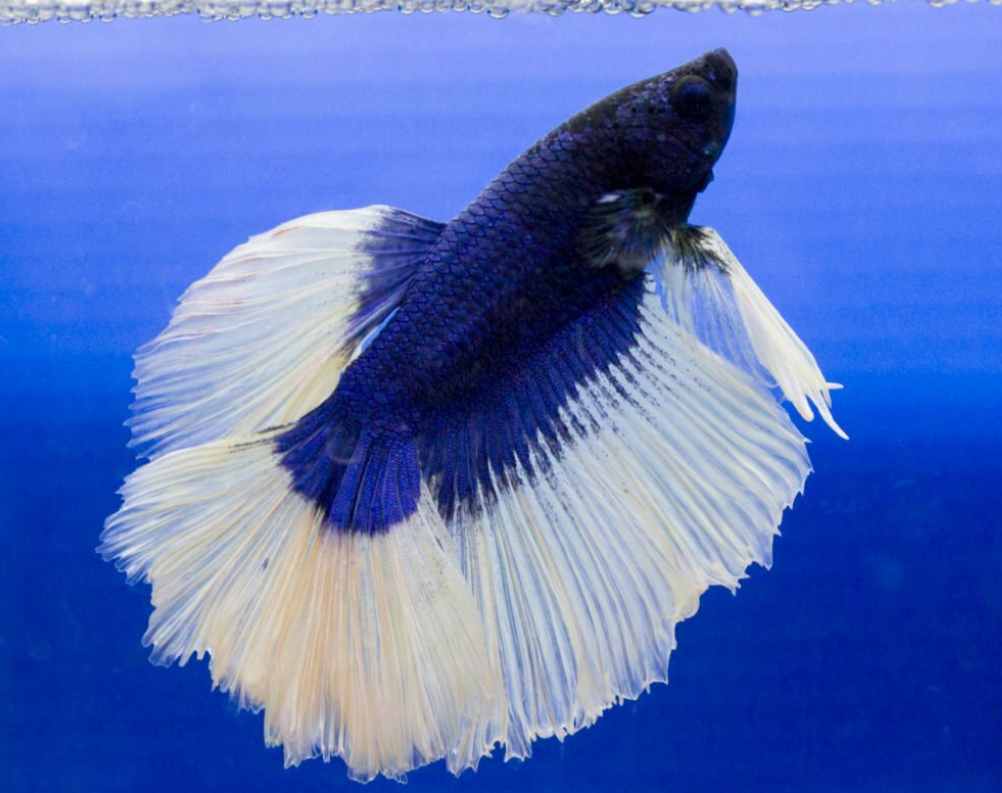
A 20-gallon tank and a Betta can comfortably house 8-10 Amano shrimp. This allows for a thriving shrimp colony while providing adequate territory for the Betta.
Note that Amano shrimp molt (shed their exoskeleton) about once per month. They become reclusive and vulnerable during this time, so ample hiding spots are essential. Never remove old shells – shrimp will eat these to regain nutrients.
Start conservatively with 3 Amano shrimp, even in 5 gallons. Scale up slowly, providing one shrimp per 2 gallons. Heavy planting and hiding spaces will improve compatibility in smaller tanks. Monitor the Betta’s aggression and be prepared to separate any shrimp being excessively bullied.
Conclusion
Amano shrimp can make suitable tankmates for betta fish, provided the tank size and conditions meet the needs of both species. Here are the most critical considerations.
- Have at least a 5-gallon tank, with 1 shrimp per 2 gallons of water. Plants and decor provide vital hiding spots.
- Maintain water parameters like temperature of 76-78°F, pH of 7.0, and soft water hardness under 10 dKH to accommodate shrimp and Betta.
- Supplement betta food with shrimp pellets for a balanced Amano diet. Both will scavenge any uneaten food.
- Introduce only healthy, active shrimp specimens over 1 inch long. Quarantine new shrimp before adding.
- Monitor betta aggression closely, especially at feeding times. Have a plan to separate shrimp if the Betta persecutes them.
- Provide ample plant cover and tunnels through hardscape to allow shrimp to hide and establish zones apart from the Betta.
- Account for shrimp molting periods where they are reclusive and vulnerable for a few days.
With proper tank size, setup, water quality, and precautions, Amano shrimp and bettas can coexist successfully in a thriving community tank for 3-4 years.
